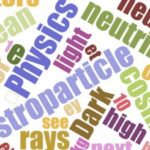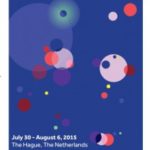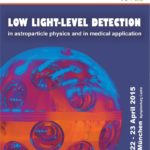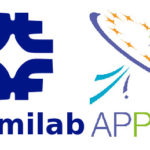
A Cold Cosmic Mystery Solved
4 February 2015
A University of Hawaii Press release – A Cold Cosmic Mystery Solved

4 February 2015
A University of Hawaii Press release – A Cold Cosmic Mystery Solved

18 April 2015
The Conference will be held from July 30 to August 6, 2015, in The Hague, The Netherlands. It is an important and large conference in the field of Astroparticle Physics. The ICRC covers: cosmic-ray physics, solar and heliospheric physics, gamma-ray astronomy, neutrino astronomy, and dark matter physics. The deadline for abstract submission is 19 March 2015.
The ICRC is organized biennially under the auspices of the Commission C4 (Astroparticle Physics) of the Union of Pure and Applied Physics (IUPAP) since 1947.

14 April 2015
European Space Observatory Science Release – First Signs of Self-interacting Dark Matter?

13 April 2015

13 April 2015

10 April 2015
CERN Press Office – AMS Days at CERN

09 April 2015
Carl Friedrich von Siemens Foundation Nymphenburg Castle, Munich, April 22/23, 2015
The Astroparticle Physics European Consortium APPEC invites technology experts from industry, project scientists and funding agencies representatives for the APPEC Technology Forum 2015. This ATF 2015 is targeted at the astroparticle physics projects’ demands in key components needed to build low light-level cameras and detectors.
The ASPERA Technology Forum in 2010 was one of the drivers for advances in photosensors and auxiliary electronics. Since that time dedicated R&D has led to substantial improvements of the photomultiplier tube technology. Continuous developments of the upcoming SiPM devices helped overcoming major drawbacks, so SiPMs may become a mass product in the near future.
A new approach, to use optimised matrixes of SiPM with a fully-integrated readout chain, would radically simplify building imaging cameras with single photon sensitivity for astroparticle physics projects as well as for medical applications. Projects scientists show in-depth presentations with technical details of camera and detector designs and required key components. Further information is given on project timelines, required R&D, technology decisions, funding, procurement and construction plans.
Technology experts from industry are invited to present their latest products fitting the needs of astroparticle physics projects. Challenges in optimizing current technology and manufacturing of key components in quantities and qualities required by astroparticle physics projects shall be addressed.Funding agencies representatives are invited to present their position in view of the realization of coming astroparticle physics projects and of a closer R&D cooperation between academia and industry.
ATF 2015 shall provide the frame to discuss with all stakeholders a fostering of R&D activities, possibilities for standardization and device integration to reduce development and production costs.
Contact:
+49-40-89984312 (Katharina Henjes-Kunst)
+49-40-89985369 (Sandra Hesping)
+49-40-89982537 (Thomas Berghöfer)

09 April 2015
The Second International Meeting for Large Neutrino Infrastructures organised by Fermilab, the Astroparticle Physics European Consortium (APPEC), the ICFA Neutrino Panel, the IUPAP Astroparticle Physics International Commitee (ApPIC) and several worldwide funding agencies will take place at Fermilab on 20 and 21 April 2015. The meeting will be preceded by the meetings of the ICFA Neutrino Panel and ApPIC both of which will report in the Second International Meeting.
This meeting follows the International Meeting for Large Neutrino Infrastructures that took place in June 2014 in Paris, during which several agencies and laboratory directors issued a joint press release declaring that the elucidation of the neutrino sector is a worldwide priority that justifies the coherent distribution of tasks and infrastructures across the world. The press release went on to urge the international neutrino community to develop urgently the necessary coherent, international program that exploits and builds on existing infrastructures and to announce the Second International Meeting to be held in the US, to evaluate the progress made with respect to the above goals.
This Second International Meeting aims to gauge the progress that was made since last summer in terms of the development of the scientific case and the organisational aspects of the worldwide collaboration in long baseline studies. The Meeting will also chart the timeline of the decision process, examine the institutional forms that will support it and also pass in review the necessary programme of supporting measurements, prototyping and R&D. In the case of the programme of supporting measurements, prototyping and R&D, possible forms of worldwide cooperation and collaboration as well as a possible distribution of tasks at the scientific community level, as well as eventual institutional forms of common or parallel funding at the agency level, will be examined.
The first day of the meeting will address the accelerator-based programme. The second day of the meeting will be devoted to the examination of the non-accelerator physics potential of the various large neutrino infrastructures and will start the discussion of closer coordination in this domain. The format of the meeting will be similar to the first one, it will consist of open sessions followed by leading principal investigators and agency officials, followed by closed meetings at the agency level. The meeting is open to all interested participants.

9 April 2015
Berkeley Lab News – For Ultra-cold Neutrino Experiment, a Successful Demonstration

05 April 2015